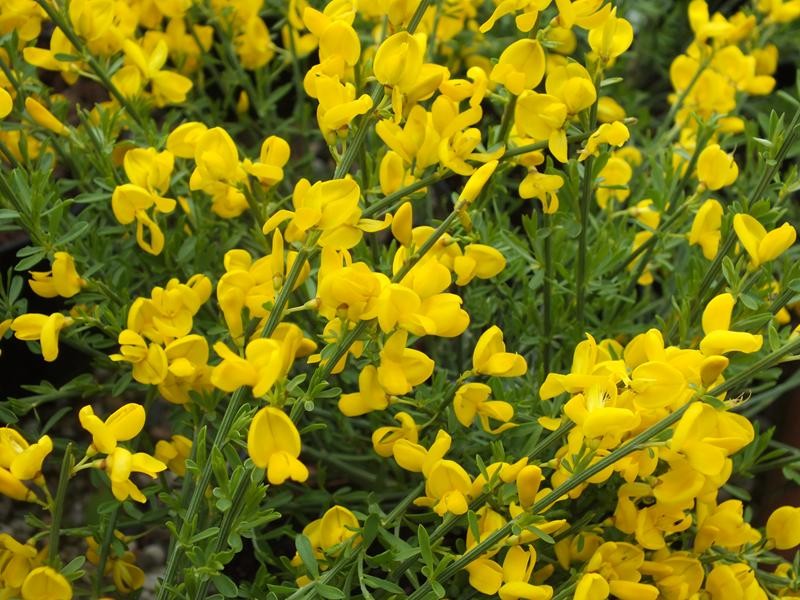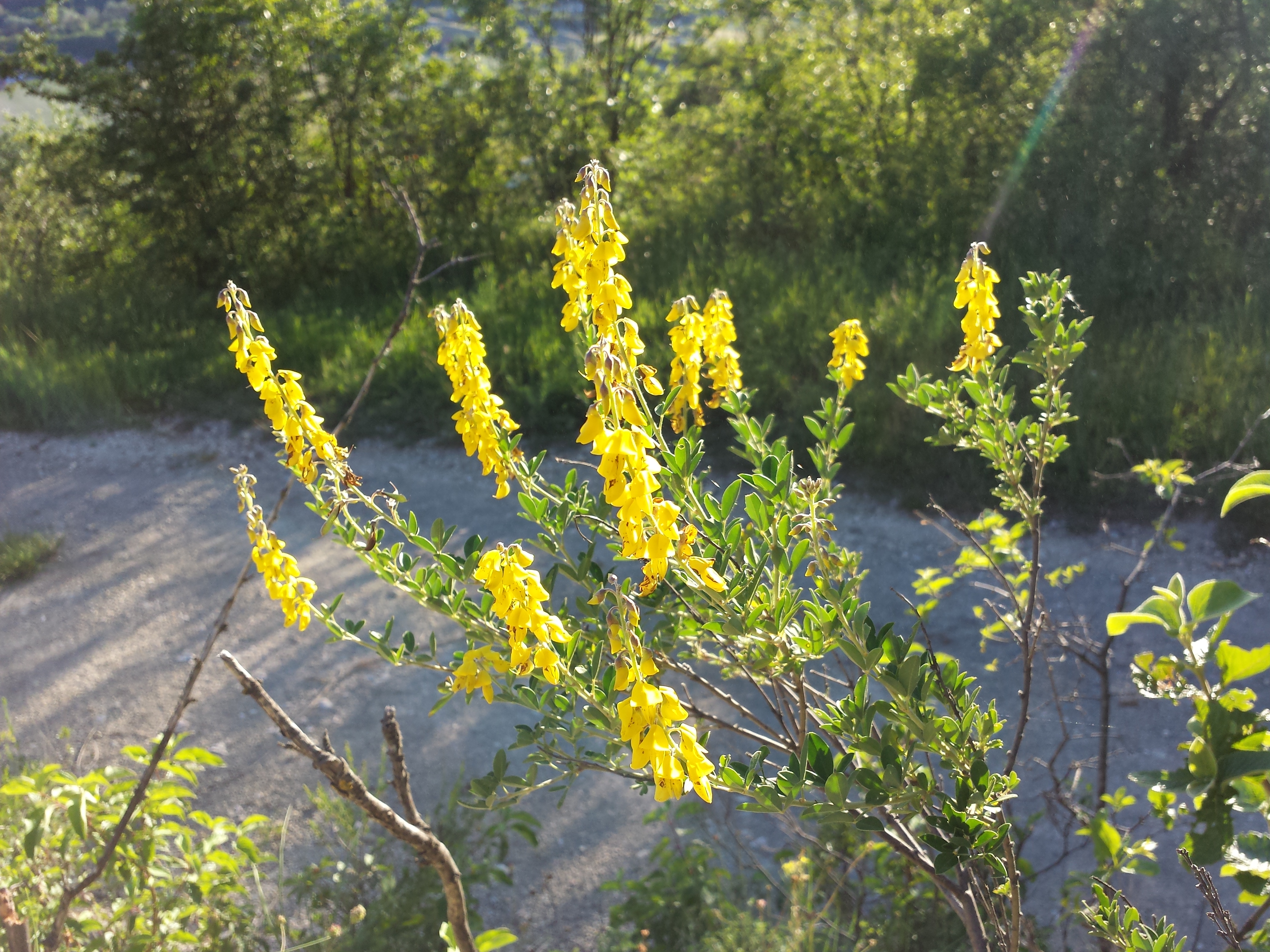The Beauty Of Cytisus: A Guide To Growing And Caring For This Stunning Shrub
The Beauty of Cytisus
Cytisus is a genus of flowering plants in the pea family Fabaceae. There are over 100 species of Cytisus, native to Europe, Asia, and Africa. Cytisus shrubs are known for their bright yellow flowers, which bloom in spring and summer. They are also known for their delicate, fern-like leaves.
Cytisus shrubs are relatively easy to care for. They prefer full sun and well-drained soil. They are drought-tolerant once established, but they do appreciate regular watering during the first year of growth. Cytisus shrubs are also relatively pest- and disease-free.
There are many different species of Cytisus to choose from. Some popular varieties include:
- Cytisus scoparius, commonly called Scotch broom, is a tall, upright shrub that can grow up to 8 feet tall. It has bright yellow flowers and fern-like leaves.
- Cytisus x kewensis, commonly called kew gold, is a smaller shrub that grows up to 4 feet tall. It has bright yellow flowers and delicate, fern-like leaves.

- Cytisus x praecox, commonly called early broom, is a fast-growing shrub that blooms in early spring. It has bright yellow flowers and fern-like leaves.
Cytisus shrubs are a great addition to any garden. They are beautiful, easy to care for, and relatively pest- and disease-free. If you are looking for a stunning shrub that will add color and interest to your garden, Cytisus is a great choice.
Main Content
Growing Cytisus Shrubs
Cytisus shrubs are relatively easy to grow. They prefer full sun and well-drained soil. They are drought-tolerant once established, but they do appreciate regular watering during the first year of growth. Cytisus shrubs are also relatively pest- and disease-free.
Here are some tips for growing Cytisus shrubs:
- Choose a location that receives full sun.
- Plant in well-drained soil.
- Water regularly during the first year of growth.
- Mulch around the base of the shrub to help retain moisture.
- Fertilize in spring with a balanced fertilizer.
Caring for Cytisus Shrubs
Once established, Cytisus shrubs are relatively low-maintenance. However, there are a few things you can do to keep them healthy and looking their best:
- Prune in late winter or early spring to remove dead or damaged branches.
- Deadhead spent flowers to encourage new blooms.
- Fertilize in spring with a balanced fertilizer.
- Protect from pests and diseases.
Pests and Diseases
Cytisus shrubs are relatively pest- and disease-free. However, they can be susceptible to aphids, scale, and powdery mildew. If you notice any pests or diseases, treat them promptly with an appropriate insecticide or fungicide.
Propagation
Cytisus shrubs can be propagated by seed, cuttings, or division.
- To propagate by seed, sow the seeds in spring in a well-drained potting mix. Keep the soil moist and the seeds will germinate in about 2-4 weeks.
- To propagate by cuttings, take 4-6 inch cuttings in early summer. Dip the cuttings in rooting hormone and plant them in a well-drained potting mix. Keep the cuttings moist and they will root in about 4-6 weeks.
- To propagate by division, divide the shrub in early spring or fall. Dig up the shrub and carefully separate the roots. Replant the divisions in well-drained soil.
Conclusion
Cytisus shrubs are a beautiful and easy-to-care-for addition to any garden. They are drought-tolerant, pest- and disease-free, and can be propagated by seed, cuttings, or division. If you are looking for a stunning shrub that will add color and interest to your garden, Cytisus is a great choice.
Cytisus is a genus of flowering plants in the pea family, Fabaceae. It includes over 150 species of shrubs and small trees, native to Europe, Asia, and North Africa. Cytisus species are known for their colorful blooms, which typically appear in the spring or early summer. Some popular cytisus species include the broom, the laburnum, and the scotch broom.
If you're interested in learning more about cytisus, I recommend visiting the Garden Wiki. This website has a wealth of information about cytisus species, including their taxonomy, morphology, ecology, and uses. You can also find photos, illustrations, and videos of cytisus plants.
FAQ of cytisus
Q: What is Cytisus?
A: Cytisus is a genus of flowering plants in the legume family, Fabaceae. It is commonly known as broom, and there are over 100 species of Cytisus found throughout Europe, Asia, and Africa. Brooms are typically small, shrubby plants with yellow, pink, or white flowers. They are often used as ornamental plants, and some species are also poisonous.
Q: How do I care for Cytisus?
A: Cytisus are relatively easy to care for plants. They prefer full sun and well-drained soil. They should be watered regularly, but not too much. Cytisus are also susceptible to frost, so they should be planted in areas that do not get too cold in the winter.
Q: How do I propagate Cytisus?
A: Cytisus can be propagated by seed, but they are more easily propagated by semi-ripe cuttings taken in late summer. Cuttings should be taken from healthy, vigorous shoots. They should be rooted in a well-drained potting mix.
Q: What are some common pests and diseases of Cytisus?
A: Cytisus are susceptible to a few pests and diseases, including aphids, scale insects, and powdery mildew. Aphids can be controlled with insecticidal soap or neem oil. Scale insects can be controlled with horticultural oil. Powdery mildew can be controlled by spraying the plant with a fungicide.
Q: Where can I find Cytisus?
A: Cytisus can be found at most garden centers and nurseries. They are also available online.
Image of cytisus
- Cytisus scoparius, or common broom, is a tall, upright shrub with yellow flowers.
- Cytisus x beanii, or golden broom, is a smaller shrub with bright yellow flowers.

- Cytisus nigricans, or black broom, is a shrub with dark purple flowers.

- Cytisus battandieri, or warminster broom, is a shrub with white flowers.

- Cytisus ardoinii, or pierre d'ardoise broom, is a shrub with purple flowers.



Post a Comment for "The Beauty Of Cytisus: A Guide To Growing And Caring For This Stunning Shrub"